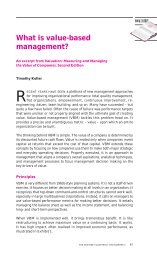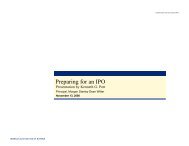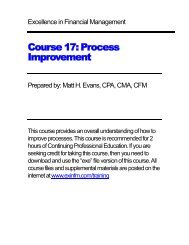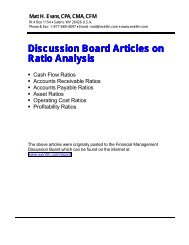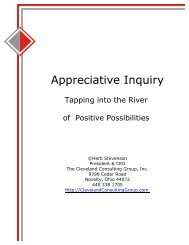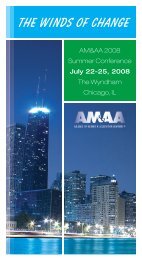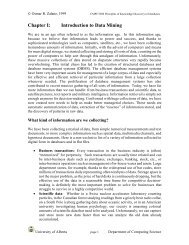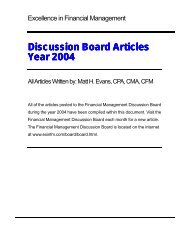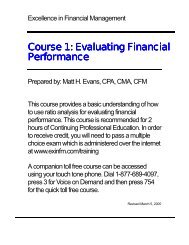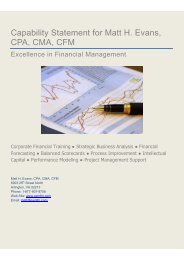Short Articles (PDF) - Excellence in Financial Management
Short Articles (PDF) - Excellence in Financial Management
Short Articles (PDF) - Excellence in Financial Management
Create successful ePaper yourself
Turn your PDF publications into a flip-book with our unique Google optimized e-Paper software.
Therefore, reta<strong>in</strong><strong>in</strong>g customers is a function of ga<strong>in</strong><strong>in</strong>g new knowledge about the<br />
customer. This requires that you establish a relationship with the customer. Once<br />
you beg<strong>in</strong> to <strong>in</strong>teract with the customer, you start to identify unique needs of the<br />
customer. This is important s<strong>in</strong>ce customers are not <strong>in</strong>terested <strong>in</strong> mak<strong>in</strong>g<br />
choices. Customers are best satisfied when you deliver products and/or services<br />
that are customized to their specific needs. Customer retention comes from<br />
treat<strong>in</strong>g each and every customer differently. The most loyal customers are those<br />
who expect you to remember what their specific needs are. The more specific a<br />
customer is with your bus<strong>in</strong>ess, the more you will be able to learn from the<br />
customer. And the less likely the customer will defect and move over to the<br />
competition.<br />
As the organization learns from the customer, it will be necessary to deliver<br />
customized products and services. The organization will have to become<br />
<strong>in</strong>creas<strong>in</strong>gly flexible with market<strong>in</strong>g and production. Additionally, a needs specific<br />
program should be directed at high value customers. The high value customers<br />
are the ones that you must reta<strong>in</strong>. In the book Enterprise One to One, the authors<br />
Don Peppers and Martha Rogers note that a learn<strong>in</strong>g relationship between the<br />
bus<strong>in</strong>ess and the customer can only take place if:<br />
- The bus<strong>in</strong>ess has the capabilities to deliver customized products and services<br />
<strong>in</strong> a cost-effective manner.<br />
- The bus<strong>in</strong>ess has <strong>in</strong>telligence about the customer and this <strong>in</strong>telligence allows<br />
the bus<strong>in</strong>ess to anticipate customer needs.<br />
- The bus<strong>in</strong>ess is very flexible and there is a strong <strong>in</strong>terface between production,<br />
market<strong>in</strong>g, and other components of customer service.<br />
- The customer is required to tell the bus<strong>in</strong>ess what specifications are required.<br />
Customers direct production, market<strong>in</strong>g, and other parts of customer service.<br />
F<strong>in</strong>ally, the emphasis is not on try<strong>in</strong>g to br<strong>in</strong>g <strong>in</strong> new customers. The emphasis is<br />
on provid<strong>in</strong>g more and more unique products and services. This wider product<br />
mix br<strong>in</strong>gs <strong>in</strong> the new customers. Consequently, the organization must be<br />
customized to meet the needs of the customer. This may require chang<strong>in</strong>g the<br />
organizational structure.<br />
We no longer live <strong>in</strong> a world where one common product or service can be<br />
spread amongst the customer mix. We are quickly mov<strong>in</strong>g <strong>in</strong>to a world where<br />
products and services are customized to meet <strong>in</strong>dividual customer needs.<br />
Customization based on learn<strong>in</strong>g from the customer is critical to value creation <strong>in</strong><br />
the future.<br />
34



